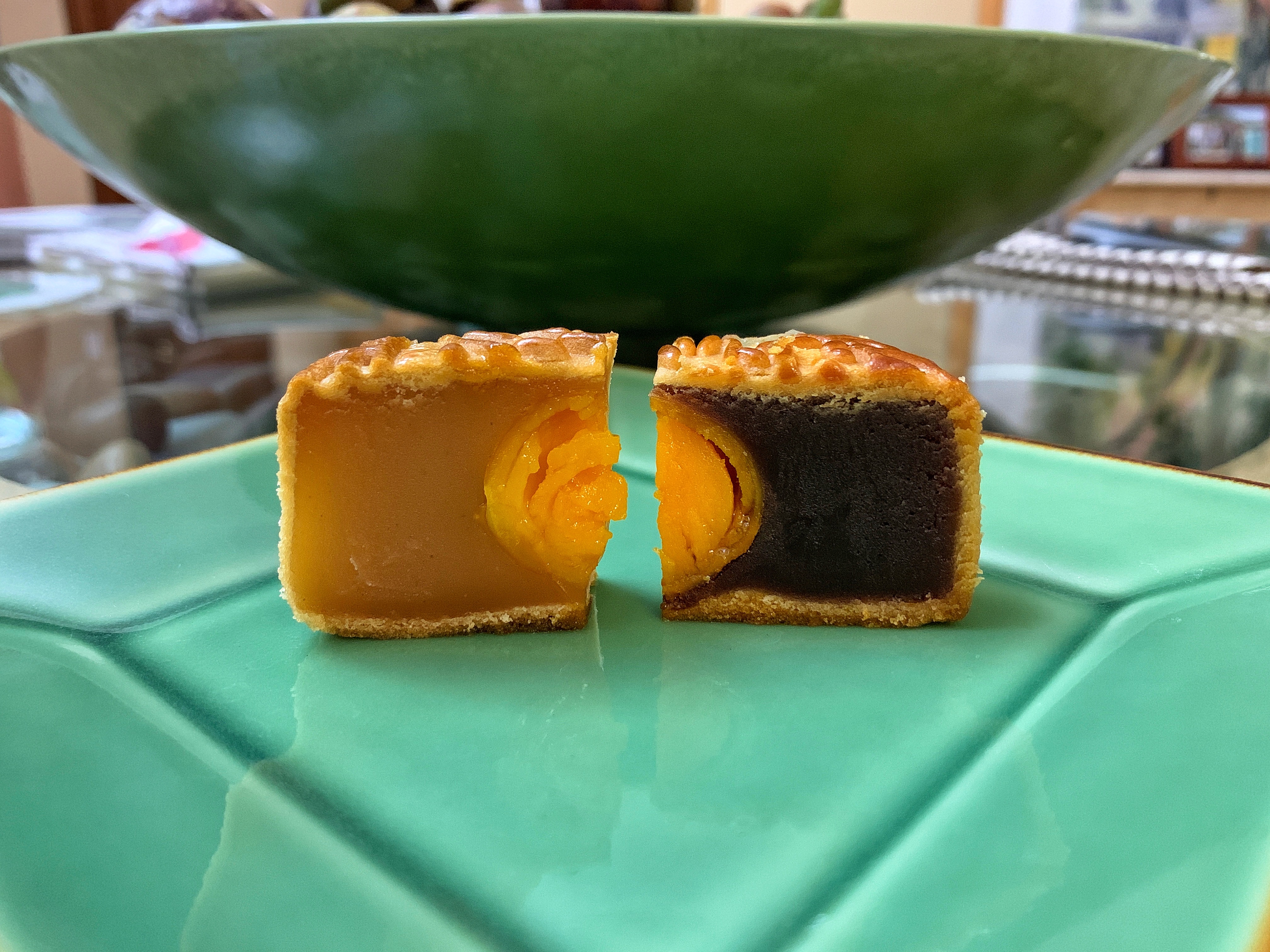
Originally posted July 19, 2021
Reposted January 25, 2023
Origins & Legends of the Famous Mid-Autumn Festival Mooncake.
Mid-Autumn Festival is just around the corner, which means it’s almost time for the annual mooncake! Learn the mooncake history and its timeline and origins stories.
Mooncake History, A Timeline Spanning 3000 Years
What is Mooncake?
Mooncake is a sweet, dense pastry filled with red bean, sesame, or lotus seed paste. Some regional variations feature savory fillings. Many contain a whole salted duck egg yolk which represents the full moon, while intricate patterns on the top of the pastry symbolize good luck, longevity, and harmony.
It is customary to eat mooncakes for Mid-Autumn Festival which honors the annual harvest in conjunction with the lunar calendar. Mid-Autumn Festival is the second most important Chinese festival after the lunar new year.
Note that despite its small size, the mooncake is never eaten whole. It’s cut like a cake and shared with others as the holiday gathers family and friends together.
Shang Dynasty, 1600 to 1046 BC
The cake that inspired mooncake dates back 3,000 years ago during the Shang Dynasty. Named the Taishi cake in honor of the prime minister, Taishi, the cake had thin edges while thick in the middle.
Tang Dynasty, 618 to 907 AD
In the Tang Dynasty, round cakes from Tibet were given to the emperor as a congratulatory gift for successfully expanding in the north. The cake was soon popularized in the palace and down to the people.
It’s been told that the concubine of the emperor named the round cake, “mooncake”.
Song Dynasty, 960 to 1279 AD
It was during the Song Dynasty that mooncake was first found in written records cited in poems.
Yuan Dynasty, 1279 to 1368 AD
In the 13th century, the Mongols successfully invaded China after many attempts, and Kublai Khan established the Yuan Dynasty.
Chinese families were expected to give Mongolian guards food and wine. A local rebel leader suggested a rebellion on Mid-Autumn Festival. In preparation for that, residents were given mooncakes that contained a message, “Kill the Mongols on the 15th day of the 8th month”, which was the first day of the Mid-Autumn Festival.
Because the Mongol guards did not eat the mooncakes, the plan succeeded and the Mongols were overthrown. In celebration, eating mooncakes on the first day of the Mid-Autumn Festival became an annual custom.
Legend Has It…
While the timeline of the mooncake history tells of its origins, many locals pass down legendary tales of the mooncake’s legacy.
One famous story recalls the Chinese goddess of the moon, Chang’e, who is the symbol of the Mid-Autumn Festival. Her husband saved the world from burning from the sun. He was gifted an elixir of immortality, which Chang’e drank to prevent it from being stolen. She ascended to the Lunar Palace where she was forever separated from her husband. Chang’e’s husband placed her favorite cakes and fruits before the moon in her memory.
A darker version of the legend shared that Chang’e drank the elixir to flee from her tyrannical husband. Commoners placed offerings to thank her for her sacrifice that she drank it and not her husband.
Sign up for my newsletter on the sidebar for blog updates and my travel insider tips! And, check out my vlogs on YouTube!


